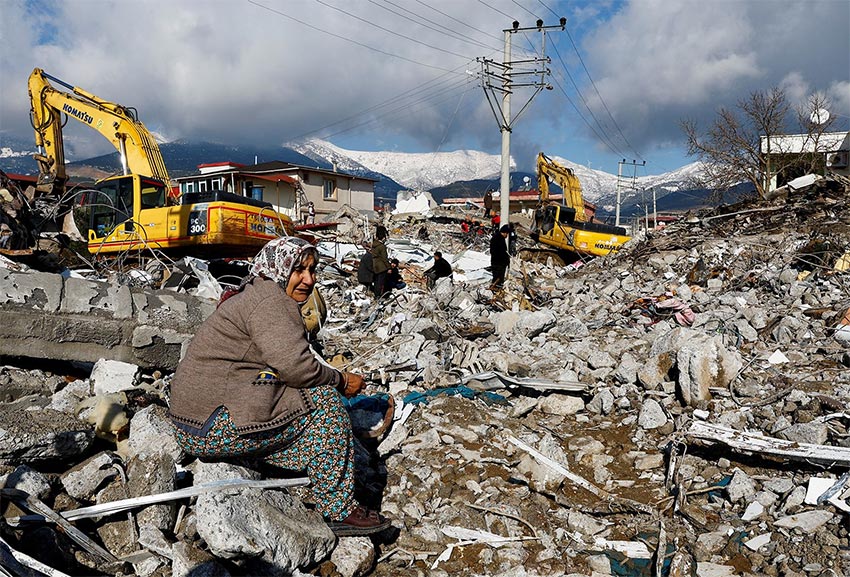A massive earthquake that struck southeastern Turkey near the Syrian border early Monday morning killed about 16,000 people and injured thousands more.
The earthquake near the city of Gaziantep was followed by many aftershocks, one as strong as the first.
The death toll is expected to continue to rise.
Why is it so deadly?

The first earthquake was strong, with a magnitude of 7.8 on the official scale. It exploded about 100 km from the fault line, causing extensive damage to nearby buildings.
Professor Joanna Fore Walker, director of the Institute for Disaster and Risk Reduction at University College London, said: “Of the deadliest earthquakes in a year, there are two of the deadliest earthquakes in the last decade,” but four for the past 10 years.”.Is it the same size?
But the force of vibration is not just pushing.
The incident happened early in the morning when people were sleeping in the house.
Dr. Carmen Solana, a volcanologist and risk communication expert at the University of Portsmouth, said: “Unfortunately, the remaining infrastructure in southern Turkey, especially in Syria, is patchy, so saving people now depends on our responses.”. Proverb. After 48 hours, the number of survivors decreased significantly.
This is an area where there have been no major earthquakes or warning signs for over 200 years, so the alert level is lower than in areas where earthquakes are common.
What causes earthquakes?

The earth’s crust is made up of separate pieces called plates that are stuck together.
These plates often try to move but are stopped by friction against adjacent plates. But sometimes the pressure is so great that one of the plates cracks violently and the surface moves.
In this case, it is the Arabian Plate that is moving north and rubbing against the Anatolian Plate.
Plate friction has caused very destructive earthquakes in the past.
On August 13, 1822, there was a magnitude 7.4 earthquake, much weaker than the magnitude 7.8 earthquake recorded on Monday.
However, earthquakes in the 19th century severely damaged the region’s cities, killing 7,000 in Aleppo alone. The terrible aftereffects continued for almost a year.
This earthquake was followed by several aftershocks that scientists say will follow a pattern similar to previous large earthquakes in the region.
3,700 people died and survived the massive earthquakes in Turkey and Syria.

KAHRAMANMERAS, TURKEY/DAMASCUS, Feb 6 (Reuters) – More than 3,700 people were killed in parts of Turkey and northern Syria on Monday when an earthquake struck Turkey and parts of northern Syria. for the people It is very difficult to find the injured, homeless or survivors.
The magnitude of the quake destroyed entire houses in Turkish cities and killed more than a million Syrians during the war.
It occurred during stormy weather before dawn and was followed shortly after noon by another powerful earthquake.

“We are shaking like a cradle,” said a woman from Diyarbakir, southeastern Turkey, near the ruins of the seven-story building in which she lived. We were nine at home. I have two children who are devastated. “It’s like the end,” said Abdul Salam Al-Mahmood, a Syrian from the northern city of Attareb. It’s cold and rainy and people need to save money.
The most powerful earthquake in the world recorded by the US Geological Survey was the August 2021 South Atlantic earthquake.
According to the Turkish Emergency and Disaster Management Agency (AFAD), the death toll in Turkey stands at 2,316. The quake is the largest since the Sea of Marmara devastated areas east of Istanbul in 1999, killing more than 17,000. people.
- ‘Can’t erase democracy’s voice’: Rahul on expunging of his remarks in Lok Sabha
- This girl had to be ashamed when, On the ramp walk when the skirt was torn from behind.
- Oh! Disha Patani how to saved herself from the when boy was looking her boobs
